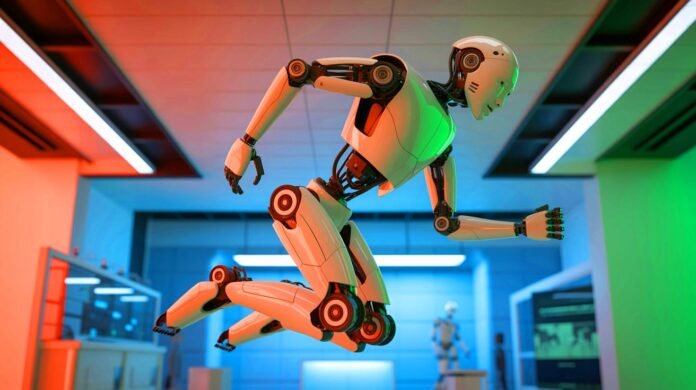| IN A NUTSHELL |
|
In the rapidly evolving world of robotics, a groundbreaking development has emerged from MIT’s Computer Science and Artificial Intelligence Laboratory (CSAIL). Researchers at MIT have employed generative AI models to significantly enhance the design and functionality of robots. This innovative approach has enabled robots to jump 41% higher than their traditionally designed counterparts. By leveraging diffusion-based techniques, these scientists are not only improving robotic movement but also paving the way for future advancements in the field. The implications of this research stretch far beyond mere jumping, suggesting potential applications in various industries.
The Science Behind AI-Enhanced Robotics
The MIT team utilized diffusion models to revolutionize how robots are designed and operate. Traditionally, robotic designs relied heavily on human intuition and manual design processes. However, the integration of AI into this process allows for more efficient and effective designs. By employing AI, researchers can draft a 3D model of a robot and specify parts for modification, optimizing dimensions and functionality. This process not only enhances the robot’s capabilities but also offers a new perspective on design principles.
In their recent experiment, MIT researchers applied this methodology to create a robot capable of jumping an average of approximately 2 feet, which is 41% higher than a similar robot designed without AI assistance. The AI-generated design features curved linkages, resembling thick drumsticks, that contrast with the straight, rectangular connections of traditional models. This innovative design allows the robot to store more energy, resulting in higher jumps without compromising the structural integrity of the links.
Unveiling the AI-Generated Design
One of the remarkable aspects of this research is how AI can transform conventional design thinking. The AI-generated robots, although similar in appearance to their human-designed counterparts, feature distinct structural differences. Both are constructed from polylactic acid and start as flat forms before expanding into a diamond shape when activated. However, the AI’s unique linkage design was key to its superior performance.
Through iterative processes, the researchers refined the AI model’s designs, which ultimately resulted in a shape that dramatically improved the robot’s jumping capability. This process underscores the potential of AI to not only match but exceed human ingenuity in mechanical design. Such advancements could revolutionize the way we approach the design and functionality of robots, with applications ranging from manufacturing to everyday consumer products.
Implications for Future Robotics
The success of MIT’s AI-assisted robot highlights the transformative potential of integrating AI into robotic design. The experiment demonstrated a significant reduction in the frequency of the robot’s falls, with an 84% improvement over baseline models. This breakthrough suggests that AI can play a crucial role in enhancing both the performance and safety of robots.
As researchers continue to explore this technology, the possibilities for future applications are vast. The integration of lighter materials and additional motors could further enhance the robot’s capabilities, potentially leading to even higher jumps and improved directional control. These advancements could lead to new innovations in sectors such as logistics, healthcare, and beyond, where robots could perform tasks with greater efficiency and precision.
Exploring New Horizons in Robotic Design
MIT’s research team is excited about the future prospects of AI in robotic design. By utilizing natural language processing to guide diffusion models, researchers envision creating robots capable of performing diverse tasks, such as picking up objects or operating machinery. This approach could democratize robotic design, allowing users to customize robots for specific applications easily.
As the technology develops, the potential to blend AI with other emerging technologies could unlock new industries and redefine existing ones. The ability to rapidly prototype and refine robotic designs through AI can lead to cost-effective and highly adaptable robotic systems. Such advancements not only promise to enhance industrial efficiency but could also lead to the creation of robots that seamlessly integrate into everyday life, performing complex tasks with ease.
The advancements at MIT’s CSAIL highlight a future where AI is integral to robotic design, offering capabilities previously thought beyond reach. As researchers continue to push the boundaries of what is possible, one must wonder: what other untapped potential lies within the intersection of AI and robotics, waiting to be discovered?
Our author used artificial intelligence to enhance this article.
Did you like it? 4.6/5 (24)






